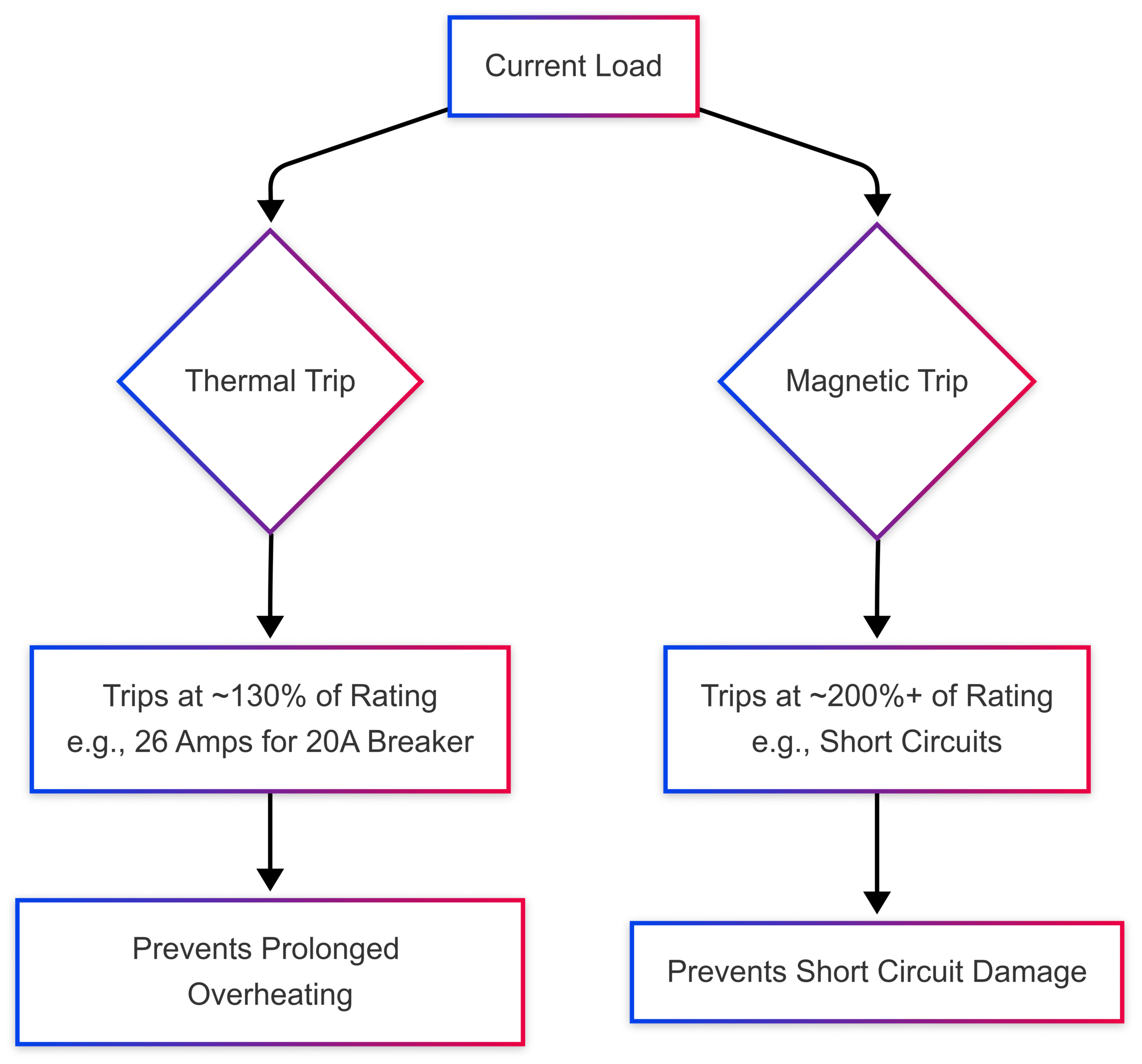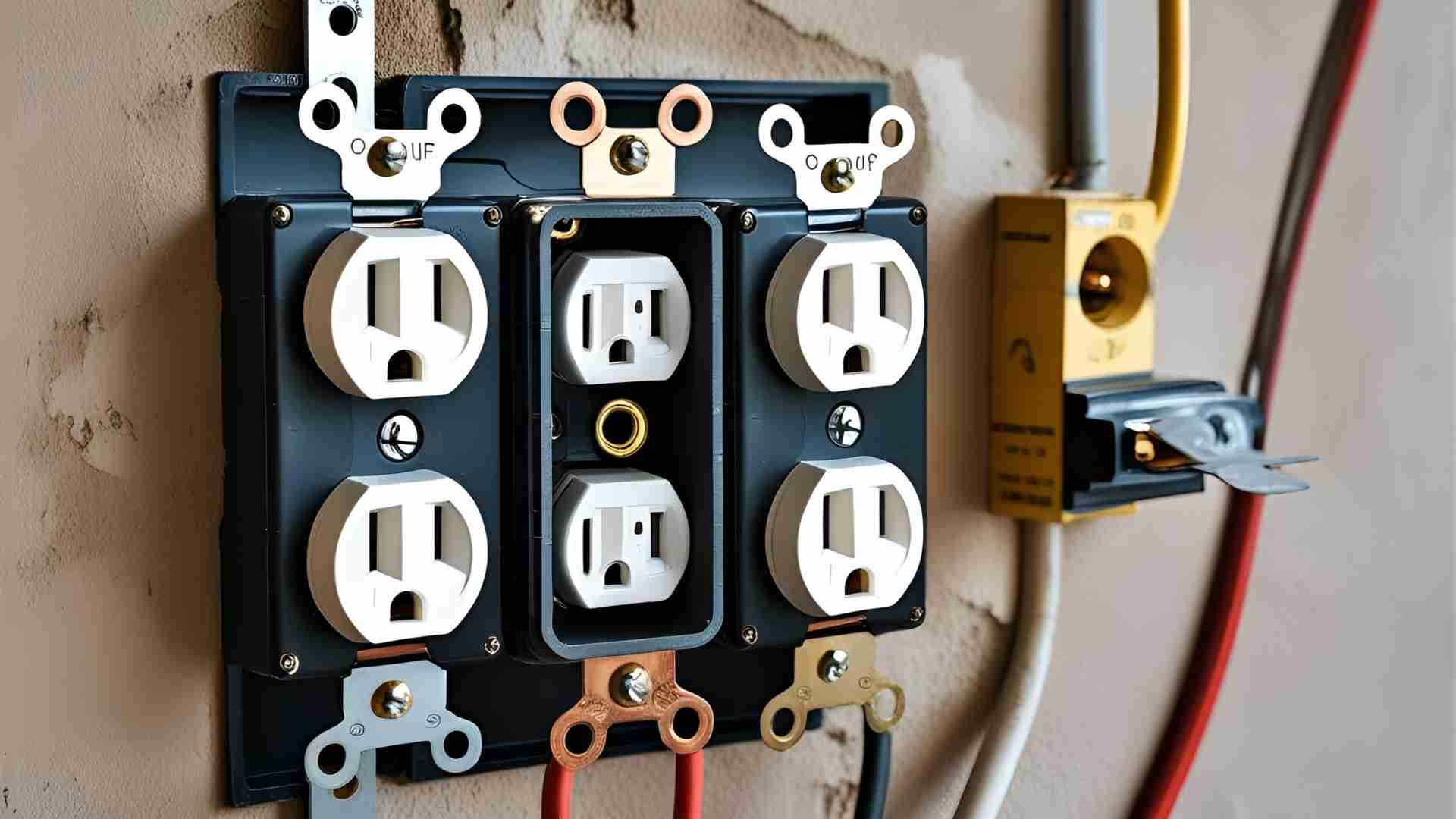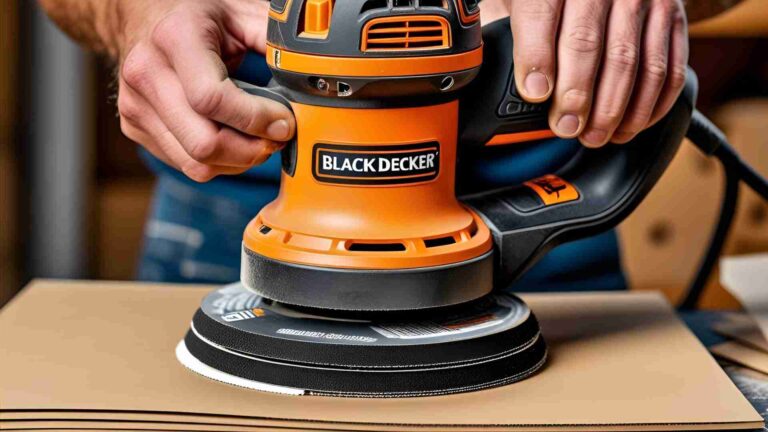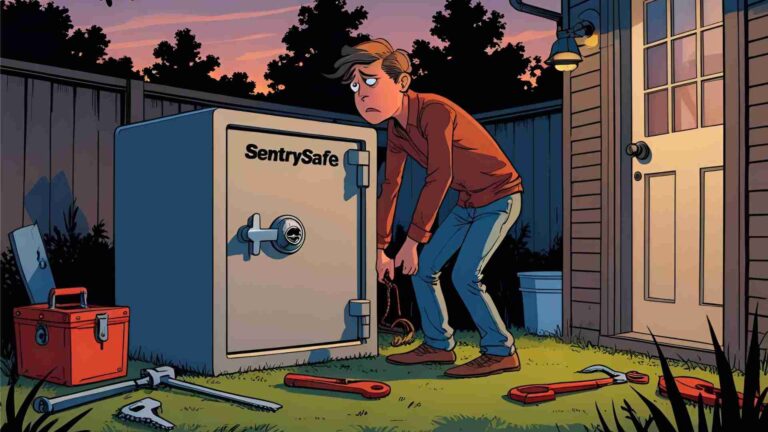Can I use a 15 amp outlet on a 20 amp breaker?
Learn if a 15 amp plug can be safely used on a 20 amp circuit, per NEC guidelines. Understand receptacle ratings, risks, and best practices.
The question of whether a 15 amp plug can be safely used in a 20 amp circuit is common among homeowners, DIY enthusiasts, and even some professionals. This article provides a comprehensive exploration of this topic, diving into the National Electrical Code (NEC) guidelines, receptacle ratings, circuit breaker functionality, and practical safety considerations. By understanding the interplay between these components, you can make informed decisions about electrical installations and avoid potential hazards.
Introduction
The compatibility of 15 amp receptacles with 20 amp circuits is a nuanced topic governed by the National Electrical Code (NEC). This guide explains the key considerations, including receptacle ratings, circuit breaker behavior, and safety practices to ensure safe electrical installations.
Key Takeaways
- NEC Compliance: According to NEC 2020, section 210.21(B)(3), 15 amp receptacles can be used on 20 amp circuits when multiple receptacles are present, but single receptacles on a 20 amp circuit must be rated at 20 amps.
- Load Limits: A 15 amp receptacle on a 20 amp circuit is limited to a 12 amp load per receptacle to prevent overheating.
- Risks: Overloading a 15 amp receptacle, especially with high-draw devices like space heaters, can cause overheating and potential fire hazards, even if the breaker doesn’t trip immediately.
Understanding Receptacle and Circuit Ratings
Receptacle Ratings
Receptacles are rated based on the maximum current they can safely handle:
- 15 Amp Receptacles: Designed to handle up to 15 amps, with a UL listing that allows a 20 amp pass-through for circuits with multiple receptacles. They feature two vertical slots and a grounding hole.
- 20 Amp Receptacles: Can handle up to 20 amps and have an additional horizontal slot on one of the vertical slots, preventing 20 amp plugs from being inserted into 15 amp receptacles.
Circuit Breaker Ratings
Circuit breakers protect wiring by tripping when the current exceeds safe levels:
- 15 Amp Breaker: Trips at approximately 130% of its rating (19.5 amps) for thermal trips and higher for magnetic trips.
- 20 Amp Breaker: Trips at approximately 130% of its rating (26 amps) for thermal trips, allowing a margin where a 15 amp receptacle could overheat before the breaker trips.
Wire Gauge
The wire gauge must match the circuit rating:
- 14 AWG: Suitable for 15 amp circuits.
- 12 AWG or 10 AWG: Required for 20 amp circuits to handle the higher current safely.
NEC Guidelines
The NEC provides specific rules for receptacle and circuit compatibility:
- NEC 210.21(B)(1): A single receptacle on an individual branch circuit must have an ampere rating not less than the circuit’s rating. For a 20 amp circuit, a 20 amp receptacle is required.
- NEC 210.21(B)(3): For circuits with multiple receptacles, both 15 and 20 amp receptacles are permitted on a 20 amp circuit, as outlined in Table 210.21(B)(3).
Table: NEC 210.21(B)(3) Receptacle Ratings for Various Circuit Ratings
| Circuit Rating (Amps) | Permissible Receptacle Rating (Amps) |
|---|---|
| 15 | 15 |
| 20 | 15 or 20 |
| 30 | 30 |
- NEC 210.21(B)(2): The maximum load on a 15 amp receptacle should not exceed 12 amps to prevent overheating, regardless of whether it’s on a 15 or 20 amp circuit.
Why 15 Amp Receptacles on 20 Amp Circuits?
Practical Usage
The NEC allows 15 amp receptacles on 20 amp circuits because most household circuits are not fully loaded to their maximum capacity. Multiple receptacles on a circuit distribute the load, reducing the likelihood that any single receptacle will handle the full 20 amps. This is common in kitchens, where 20 amp circuits power multiple 15 amp receptacles for countertop appliances.
Cost and Availability
15 amp receptacles are more cost-effective and widely available than 20 amp receptacles. They are sufficient for most household devices, which typically draw less than 12 amps. Using 15 amp receptacles on 20 amp circuits balances safety, cost, and practicality.
Safety Considerations
The NEC assumes that users will not overload a single receptacle. The 12 amp limit per receptacle ensures that the receptacle’s components do not overheat under normal use. However, overloading a receptacle with high-draw devices can lead to overheating, as discussed below.
Risks of Overloading
Overheating and Melting
A 15 amp receptacle can overheat if subjected to a continuous load exceeding 12 amps. For example, plugging two 1500-watt space heaters (each drawing approximately 12.5 amps) into a duplex 15 amp receptacle could result in a total draw of 25 amps. This exceeds the receptacle’s rating and may cause it to melt, even though the 20 amp breaker may not trip until the load reaches 26 amps.
Table: Example Load Scenarios
| Device(s) Plugged In | Total Amperage Drawn | Potential Risk |
|---|---|---|
| 1 Space Heater (1500W) | ~12.5 Amps | Safe within 15 amp receptacle limit |
| 2 Space Heaters (3000W total) | ~25 Amps | High risk of overheating and fire |
| TV (300W) + Laptop (100W) | ~3.3 Amps | Safe, well below receptacle limit |
Daisy-Chaining Power Strips
Using power strips to connect multiple devices to a single receptacle can also lead to overloading. A power strip with a 15 amp plug is rated for 15 amps total, but plugging in multiple high-draw devices could exceed this limit, causing the receptacle or power strip to overheat. UL standards require power strips to have fuses or breakers, but daisy-chaining multiple power strips can bypass these protections, increasing fire risk.
Circuit Breaker Tripping Mechanisms
Circuit breakers have two tripping mechanisms:
- Thermal Trip: Responds to prolonged overcurrent by heating a bi-metal strip, typically tripping at 130% of the breaker’s rating (e.g., 26 amps for a 20 amp breaker).
- Magnetic Trip: Responds to sudden high currents (e.g., short circuits), tripping at 200% or more of the breaker’s rating.
This design allows breakers to tolerate short-term surges but may not prevent overheating in a 15 amp receptacle subjected to a sustained load between 15 and 26 amps.
Chart: Circuit Breaker Tripping Curve

Best Practices for Safe Electrical Installations
- Match Receptacle to Circuit for Single Outlets: Use a 20 amp receptacle for a single receptacle on a 20 amp circuit, per NEC 210.21(B)(1).
- Use Proper Wire Gauge: Ensure 12 AWG or 10 AWG wire is used for 20 amp circuits to prevent overheating.
- Limit Loads on 15 Amp Receptacles: Do not exceed 12 amps per 15 amp receptacle, even on a 20 amp circuit.
- Avoid Overloading with High-Draw Devices: Do not plug multiple high-draw devices (e.g., space heaters) into a single receptacle or power strip.
- Use Quality Receptacles: Consider commercial or hospital-grade 15 amp receptacles for improved durability, especially in high-use areas like garages or workshops.
- Check Wire Gauge Before Upgrading: When replacing receptacles, verify that the wire gauge matches the circuit breaker (12 AWG for 20 amp circuits).
- Install GFCI Protection: In kitchens and other areas prone to moisture, use GFCI-protected receptacles to enhance safety.
Table: Recommended Receptacle Types and Costs
| Receptacle Type | Rating | Typical Cost (USD) | Use Case |
|---|---|---|---|
| Standard 15 Amp | 15A | $1.50–$3.00 | General household use |
| Commercial Grade 15 Amp | 15A | $5.00–$10.00 | High-use areas (e.g., garages) |
| Hospital Grade 15 Amp | 15A | $10.00–$15.00 | Critical applications |
| Standard 20 Amp | 20A | $3.00–$6.00 | Kitchen appliances, workshops |
Why Can’t a 20 Amp Receptacle Be Used on a 15 Amp Circuit?
A 20 amp receptacle on a 15 amp circuit is not permitted by NEC 210.21(B)(3) because it could mislead users into plugging in a 20 amp device, overloading the 14 AWG wiring typically used in 15 amp circuits. This could cause the wiring to overheat before the 15 amp breaker trips, creating a fire hazard. The breaker protects the wiring, but the mismatch in receptacle rating could lead to unsafe assumptions about the circuit’s capacity.
Practical Example
Consider a homeowner rehabbing a kitchen who replaces a 15 amp receptacle with a 20 amp receptacle on a 20 amp circuit without checking the wire gauge. If the wiring is 14 AWG (suitable for 15 amp circuits), the circuit is unsafe, as the 20 amp breaker may not trip before the wiring overheats. Always verify the wire gauge (12 AWG for 20 amp circuits) before upgrading receptacles.
Common Misconceptions
- Myth: A 15 amp receptacle can safely handle 15 amps continuously.
- Reality: The NEC limits 15 amp receptacles to 12 amps to prevent overheating.
- Myth: A 20 amp breaker will trip immediately if a 15 amp receptacle is overloaded.
- Reality: A 20 amp breaker may not trip until the load exceeds 26 amps, allowing a 15 amp receptacle to overheat.
- Myth: 15 amp and 20 amp receptacles are identical internally.
- Reality: While similar, 15 amp receptacles are UL-listed for 20 amp pass-through, but their contacts are rated for 15 amps, and continuous loads above 12 amps can cause overheating.
Real-World Applications
Kitchen Circuits
Kitchens often use 20 amp circuits with multiple 15 amp duplex receptacles to power countertop appliances. This setup is NEC-compliant and safe, provided each receptacle’s load does not exceed 12 amps. For example, a toaster (10 amps) and a coffee maker (8 amps) on separate receptacles are within safe limits.
Workshops and Garages
In high-use areas like workshops, 20 amp receptacles may be preferred for tools like welders or table saws that draw close to 20 amps. Using commercial or hospital-grade 15 amp receptacles can also improve durability for frequent plugging and unplugging.
Conclusion
Using a 15 amp plug in a 20 amp circuit is generally safe and NEC-compliant when multiple receptacles are involved, provided the load per receptacle does not exceed 12 amps. However, single receptacles on a 20 amp circuit must be 20 amp rated to match the circuit’s capacity. Understanding the NEC guidelines, verifying wire gauge, and adhering to load limits are critical to preventing overheating and ensuring safety. For complex installations, consult a licensed electrician to ensure compliance and safety.
Additional Notes
- Professional Assistance: For electrical upgrades or repairs, contact a licensed electrician. In areas like Philadelphia, PA, services like WM Henderson offer reliable installation and repair at competitive rates (contact: (484) 416-8205).
- Further Reading: For more details on wiring specific appliances, refer to guides on wiring power outlets for electric stoves or consult NEC 2020 section 210.21.
By following these guidelines, you can ensure your electrical system is safe, compliant, and efficient, whether you’re a homeowner or a professional electrician.
Please share this Can I use a 15 amp outlet on a 20 amp breaker? your friends and do a comment below about your feedback.
We will meet you on next article.
Until you can read, Can I Use Quick Set Concrete In The Rain






